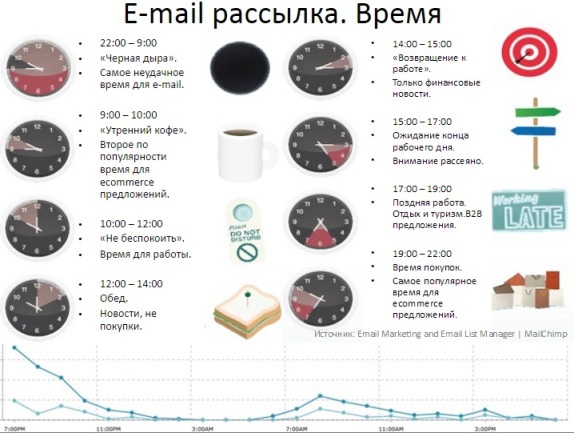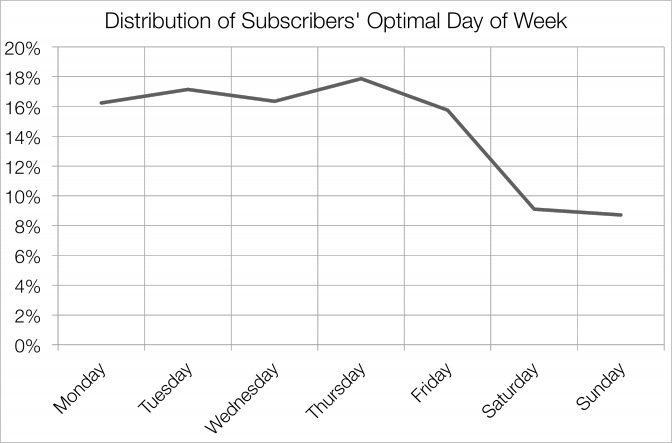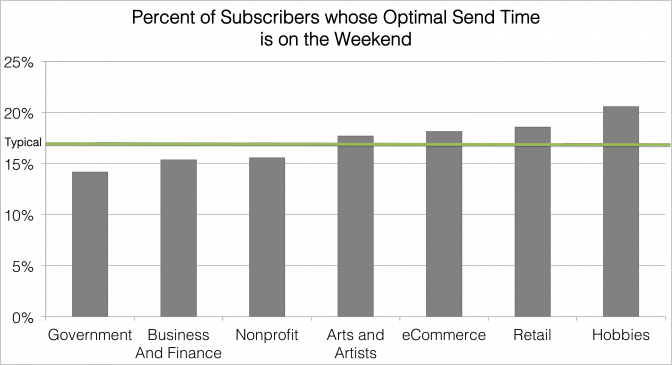Increasing online store sales: 5 steps to create the perfect email newsletter
- Transfer
 A well-designed email distribution helps support the client at every stage of his journey through the sales funnel, prompting him and motivating targeted actions that are important to you. In addition, the automatic sequence of letters can draw the attention of the client (both real and potential) to your by-products, to some additional functions, and in general, the newsletter can be adjusted to almost any of your needs. This is one of the main ways of constant communication with customers. How to create an effective sequence of emails for the autoresponder? This article by Jeremy Reeves, written in the first person, will be useful both to those who decided to supplement the service of their online store with automatic e-mails, but don’t know where to start, or who are already trying to “catch up” potential customers with emails, but the return on their current mailing does not suit the owners of the service. How to increase sales of an online store (or some other service) using an email newsletter?
A well-designed email distribution helps support the client at every stage of his journey through the sales funnel, prompting him and motivating targeted actions that are important to you. In addition, the automatic sequence of letters can draw the attention of the client (both real and potential) to your by-products, to some additional functions, and in general, the newsletter can be adjusted to almost any of your needs. This is one of the main ways of constant communication with customers. How to create an effective sequence of emails for the autoresponder? This article by Jeremy Reeves, written in the first person, will be useful both to those who decided to supplement the service of their online store with automatic e-mails, but don’t know where to start, or who are already trying to “catch up” potential customers with emails, but the return on their current mailing does not suit the owners of the service. How to increase sales of an online store (or some other service) using an email newsletter?Correct emails will lead to correct results!
In this article, we will focus on autoresponders - “answering machines” in the e-mail distribution system. In the process of analyzing each step of creating a sequence of emails, I will give you some tips to help you create the perfect sequence of automatically sent emails.
It all starts with answering the question:
What is the purpose of automatic mailing?
It will be different for each person who will implement it.
- Someone will try to use it to sell the product;
- Someone will sell the service;
- Someone will simply try to establish long-term trusting relationships with potential customers in order to sell a product or service in the future.
One way or another, we can fit all of the above into one sentence.
The purpose of any automatic newsletter is to promote a specific potential customer further on your sales funnel.
A newsletter is not a way to make new friends. You are not going to become the center of the universe and be heard with it. You are not going to form your own brand through a series of emails. These goals may be concomitant, but the main thing is different. The only purpose of automatic mailing is to move a specific potential customer further up your sales funnel.
Yes, in parallel this may include all of the above things, such as the formation of your brand, but each e-mail in your sequence of letters should be sent for some reason, and the purpose of sending it should motivate the potential customer to perform the following target action to advance through the funnel. This may be work on the level of confidence of a potential client in you so that he subsequently purchases your product, or forging ties so that when the client needs this service, he chooses your service. Whatever the target action of the client, it is your goal.
And we begin with the first step.
Step 1: Set Your Goals
Before you write at least a word for the newsletter, you should think about and decide on your ultimate goal. If you want to sell products, this goal must sit firmly in your brain in order to form an understanding of how to achieve it. If you want to sell a service, you will take a different approach to achieve it, and you also need to think about which one.
Deciding on goals is quite simple.
- Are you going to sell a product?
- Do you go to establish long-term trusting relationships?
- Are you going to make a fuss about your business?
- Are you going to launch a new product?
- Do you go to break out into the market leaders?
Each of these five goals will require a different strategy from the rest, but if you do not know the ultimate goal, it is impossible to develop a suitable one. To constantly keep in mind the goals of the mailing list when writing emails, visualization helps, for example, you can write out goals and subtasks in a separate file or reflect in a presentation.

Step 2: Decide on a Strategy
Your strategy will depend on the goals you want to achieve.
Someone like a realtor, for example, does not need a lot of communication in email, unlike someone who is trying to sell an information product. A company that provides cleaning services must adhere to a different tone of distribution than the company that organizes children's parties. But in any case, to achieve maximum efficiency, you should remember the five most important points.
1: Reliability and Professionalism- people do not want to deal with lovers. If you want to organize an effective automatic mailing, you should think about how to show your level of professionalism in every moment of communication with a client. There are many options for how to do this - reviews of happy customers, true stories of the use of your product, appearance in the media and much more.
Here, for example, is what I like to use.
Email Subject, if schematic, maybe something like this: "You should congratulate Charlie!"
The letter itself:
Hey, <name>!
I wrote to you so that you would not forget to congratulate Charlie, he finally found a solution to the problem that bothered us all. He just bought <your product name>, took an hour to understand the instructions, and already started everything. Namely, he introduced the technique from the second module, with the help of which, as written in the instructions, <he can get the benefit that your target audience wants to achieve> without the "problems typical for this solution>.
And what is the result?
In just a week <he got the benefits your target audience needs>.
Next are your words about how a potential client can be just as lucky.
2: Trust- In the world, it is becoming increasingly difficult to trust anyone. True life stories are a wonderful way to increase your confidence. In my own letters I prove to potential clients that I can be trusted, but at the same time I'm not annoying. In doing so, I refer to stories of how other copywriters mistreat clients.
Here is an example that I like to use. Feel free to tailor it to your needs.
I just spoke with one client over the phone. He complained that there were almost no honest people left in this area. I agree! I will not give names, but the client told me how he caught one of my competitors on an outright lie. Perhaps this competitor <think of something he could lie about>.
Listen, I just don't want this to happen to you either. In my opinion, this is disgusting ...
Next are your words about why you can be trusted, and do not forget to give examples.
3: Persistence and persistence - you must demonstrate perseverance and persistence because they help build confidence.
Think of the people you see more often than others. Do you trust them more than those you see less often?
Persistence, of course, does not mean that you should write emails every day. The frequency can be different: once a day, once a week, once a month. It is worth doing this for every possible reason, the more often - the better. The main thing is stability, constancy. And how to choose the right time for your newsletter?

The timing of the mailing should be made in accordance with its goals and the scope of your activity, as can be seen from the diagram above.
4: Leadership - people dutifully follow the leader. Superiority in a particular field creates credibility, and it makes people trust you. Leadership is again about trust. The easiest way is to gain a leading position in the representation of your potential customers by showing them concrete evidence of your professionalism (see how everything is interconnected?), And immediately after explaining to them specifically what they should do. And they will do it.
5: Personalization- nobody likes boring general words. You build strong relationships with people, build deep long-term relationships with people who are personalities, and each of them has its own charisma. Through emails, this can be done by paying attention to your own personality, emphasizing your most striking features in the letters. For example, if you have funny weird habits ... tell us about it! It may sound implausible, but it works.
Step 3: Make a Clear Plan for Your Newsletter
Once you have developed a clear strategy, you need to plan the sequence of letters of the autoresponder.
You can draw up a plan schematically, for example, as in the figure above. The main thing is that everything should be clear to you.
The question that interests you first of all is: “How many of them should be in total in sequence?”. If you compose letters yourself, it is quite easy to make a long sequence of letters. Personally, I have more than 100.
But if you need to hire a copywriter, it is better to estimate how many ordered letters really pay off, which means how effective the mailing will be. It makes sense to order 10-20 texts, but if suddenly there will be more than 20, and after the twentieth ROI starts to fall, you will think that this money could be spent more profitably. Only you know the answer to the question, how many letters do you need.
Suppose you decide to send 24 letters within 6 months, i.e. about 1 letter per week. How to choose the right days to send emails? The statistics of MailChimp will help in this: they have developed a special feature that, by counting and polling users, determines the most optimal time for sending letters.
Distribution of subscribers by the optimal days of the week for them as a percentage

Despite the fact that, in general, statistics do not play into the hands of weekend newsletters, there are certain categories of subscribers who read emails on weekends. Most often it depends on the subject of the letters.
Percentage of subscribers regarding several subjects of emails for which the optimal time to receive a letter is a weekend.

In addition to the distribution of subscribers by the time they read the letter as a whole, regardless of the mailing topic (it was shown in the diagram in one of the previous paragraphs), MailChimp calculated the optimal time for sending letters that contain content related to the activities of the government, non-profit organizations, the retail sector and various hobbies.
Percentage of subscribers regarding the subject of the letter - the best time to send out during the day

After you figured out the optimal sending time for you, you should come up with and write out at least one convincing reason for the email (some of your achievements, thanks from customers, something that arouses trust) and mark it as the subject of this weeks. And so for each subsequent week.
If possible, try to find a story that describes this “event of the week.” It works wonders.
Here is a small example.
- Week 1: Honesty
- Week 2: Results
- Week 3: Improving Customer Confidence
etc. etc.
Step 4: write your emails
This item speaks for itself. At this point, you should have a goal, strategy, and a fully developed sequence. It's time to stamp your emails in piles.
If this is your first time, you should focus completely. Pour yourself coffee, find a quiet, calm place - and write.
You will be distracted.
Do not worry. This is normal. Even I, a writer, can write only about 30-40 minutes in a row, until my thoughts begin to get confused. And this is after so many years of practice! Take frequent breaks, but do not interrupt the wave of inspiration if it suddenly covers you.
I highly recommend downloading more classical music and listening to it during the creative process. Atmospheric background music will help you focus, work will go faster, and thoughts will clear up. (Classics work because it is music without words that can distract you from your work).
The easiest way to overcome the creative crisis that has arisen, the lack of inspiration, is to imagine that it does not exist. The “creative crisis” is an excuse for those who simply do not want to work. But if you still feel that you are stuck on one line, just write everything that comes to mind until some idea comes up by itself. It may seem strange, but believe me, it works.
Step 5: Verify and Debug
The last step is to upload your emails to the autoresponder system, creating a logical sequence, and start getting users into your funnel.
Let the newsletter work for some time (someone needs weeks, someone needs months, depending on the number of customers attracted), and after this time, begin to carefully work out your letters, and measure their effectiveness.
What should you pay attention to?
Low read rates. If on average recipients open 25% of the letters you send, and in this mailing this ratio is 10% - test other mailing topics.
Low click-through rate for links within the email. Same. Calculate the average for all your emails and pay attention to those letters that have a CTR (clickthrough rate) below this value. Try to come up with new ways to increase CTR, for example, by making the letter shorter, and links - more visible, increasing their number or even adding arrows pointing to them. Experiment.
High unsubscription rate. It all depends on your style. Some people practice “rejection marketing” (Howard Stern, for example) and only target very specific customers. In this case, if you deliberately send out letters that are negative for a part of the audience, you push away those who would not buy anything anyway, but attract those who buy. But if you don’t like such tricks, select the letters that you received, after which the most people unsubscribed, and try to understand why this happened.
An example of a competent letter for a newsletter - links are made in the form of noticeable call-to-action buttons.

At a certain point, when enough time has passed since the first letter was launched in your sequence of letters, you should notice that sales began to grow. If this happened, then your business can be said to be partially automated, and over time it will work better and better if you continue in the same vein.
Only registered users can participate in the survey. Please come in.
What do you think should be done of the following when creating an email newsletter?
- 65.2% Prescribe goals and objectives 15
- 47.8% Choose the right time for newsletter 11
- 47.8% Make a plan 11
- 60.8% Work on the headlines in the newsletter 14
- 52.1% Test and measure mailing efficiency 12
